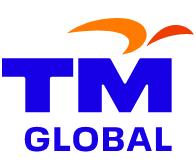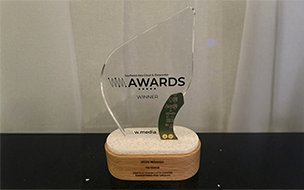Connecting multiple international locations used to involve choosing between a number of technologies and protocols like X.25, Frame Relay, ATM, SONET/SDH. However, over the last decade or so, Ethernet services have become the ideal choice. Read on to find out why.
Connecting multiple locations and enterprise networks used to involve choosing between a host of different technologies and protocols like X.25, Frame Relay, Asynchronous Transfer Mode (ATM), Synchronous Optical Networking (SONET), Synchronous Digital Hierarchy (SDH) and mastery over them. This was needed as the internal Ethernet system was not capable of taking data beyond the local area network (LAN) and over longer distances.
However, over the last decade or so, Ethernet services have rapidly evolved and have become the most viable option for businesses to connect their various locations and networks. The emergence of standardised Carrier Ethernet services offering both point-to-point and multipoint connectivity services has given organisations needing to connect their various international locations and networks a cost effective and reliable solution. In addition, by routing traffic via a dedicated network of sub-sea and terrestrial optic fibre cables, they significantly reduce latency levels.
As a result, International Ethernet Private Line (IEPL), a secure, reliable, low latency, point-to-point connectivity solution offered by Carrier Ethernet service providers, has become the preferred choice for organisations and is dominating the market for due to a variety of reasons.
Unmatched Price-Performance
The introduction of new technologies into the networking topology, and the resultant complications arising out of that, not only increase the overall costs but are also marred by performance issues. For instance, the X.25 protocol has restricted performance capabilities; Frame Relay, though designed for better performance, can be expensive both in terms of the rental and the hardware required to convert a local Ethernet-based IP network to Frame Relay; and ATM over SONET/SDH can be prohibitively expensive even though it can provide speeds of up to 40 Gbps. All these issues impact the price-performance of these technologies and protocols.
IEPL services on the other hand offer relatively inexpensive bandwidth and can support speeds from 1 MBPS all the way to 100 Gbps, thus powering the needs of all kinds of businesses—from digital platforms to cloud service providers to telecom operators to financial services and media and entertainment firms. With unrivalled global connectivity delivered via subsea optic fibre infrastructure, IEPL provides high-performance reliability and availability at low latency levels.
In addition, the cost of Ethernet-based equipment like routers and switches—be they installed at the customer end or at the service provider end—typically tend to be far lower than similar equipment used in other technologies like ATM or Frame Relay. This lower cost of equipment coupled with better performance and reliability ensure that IEPL services provide the best price-performance for point-to-point connectivity.
Increasing Hunger for Fast Bandwidth
With the explosion in the amount of data that’s being produced and consumed across the world—research firm IDC predicts that data volume will grow to 175 zettabytes (ZB) by 2025, up from about 65 ZB in 2020—the demand for high-speed, low latency bandwidth is increasing exponentially.
This is exacerbated by the widespread adoption of the cloud—be it public, private, or hybrid—and the ever-increasing reliance on better collaboration and faster communication requiring constant sharing of critical data, often in real-time, by organisations to run their operations and functions.
This has made IEPL, with its low costs, greater flexibility, and easy management, look considerably more attractive to organisations.
Quality of Service
Quality of Service (QoS)—including high-reliability and low latency—is always a key consideration for connectivity since it is fundamental to providing unfettered access to mission critical applications and services. Thanks to the ubiquitous nature of IEPL, it’s standardised protocol, abundance of inexpensive bandwidth, capability to support high-speeds at low latency, and the ability to define varying levels of priority for different types of traffic—voice and video traffic can be prioritised over regular data—over the same bandwidth, mean that IEPL is an ideal choice to ensure quality of service to end-users.
In addition, organisations have the choice to use dynamic provisioning of bandwidth to handle peaks and troughs in demand so that they only pay for the bandwidth they use rather than provisioning for peak load.
Ease of Implementation
Since it is based on a relatively simple protocol, IEPL is easy to implement, manage and operate, and as a result is faster to roll out compared to other types of connectivity options. The use of a single technology also results in the consolidation of network services resulting in a streamlined infrastructure and protocol.
Because it operates under a uniform protocol, IEPL avoids unnecessary protocol conversions thus greatly reducing the number of skills required for implementation and management of networks.
As a result, a single, familiar Ethernet interface enables convergence over a common network infrastructure, ensures faster roll out, simplifies operations, eliminates complexity, and avoids the need to have multiple skills.
Uniform Technology Adoption
Ever since the Metro Ethernet Forum (MEF), a global industry alliance, pioneered the development of Carrier Ethernet and defined the standards, operators across the world offer a uniform, standardised set of services that address the two basic types of connectivity—point-to-point and multipoint over a dedicated network.
This has meant that traffic of an organisation can be hauled or routed over networks of multiple carriers in different parts of the world without any drop in data or latency or quality of service and gives network managers complete visibility, access, and control over their networks.
As a result, a point-to-point IEPL connection can stretch across the backbones of multiple Carrier Ethernet vendors and organisations aren’t tied down to the footprint of a single provider. They have the choice to build their networks by using the services of multiple carriers and can easily transfer from one carrier to another without the need for any expensive change of equipment.
By avoiding unnecessary protocol conversions and offering a standardised high-performance, low latency, high-speed, reliable connectivity to any part of the world, connecting multiple international locations is easier, faster, and cheaper, courtesy IEPL. They are ideally suited for a wide range of critical enterprise applications such as latency-sensitive storage applications, financial trading programs, rich media applications, collaboration and video applications, and for direct connectivity to the cloud.
With low latency levels, high quality of service levels, the choice to dynamically increase or decrease bandwidth depending on changing requirements, and the ability to define varying levels of priority for different types of traffic, IEPL is an ideal choice for connecting multiple international locations.
TM WHOLESALE’s IEPL services are designed to deliver flexible, low latency, scalable, reliable, high bandwidth access solutions for the demanding networks of global carriers, enterprises and hyperscalers to achieve a competitive edge in today’s connected world.
With more than 150 cable landing points, 28 PoPs, and access to 25 submarine cable systems, TM WHOLESALE’s IEPL services directly connect 39 countries across the globe. Besides, partnerships with other major global carriers and solution providers ensure that TM WHOLESALE can be a single solution provider for all your international connectivity needs.








